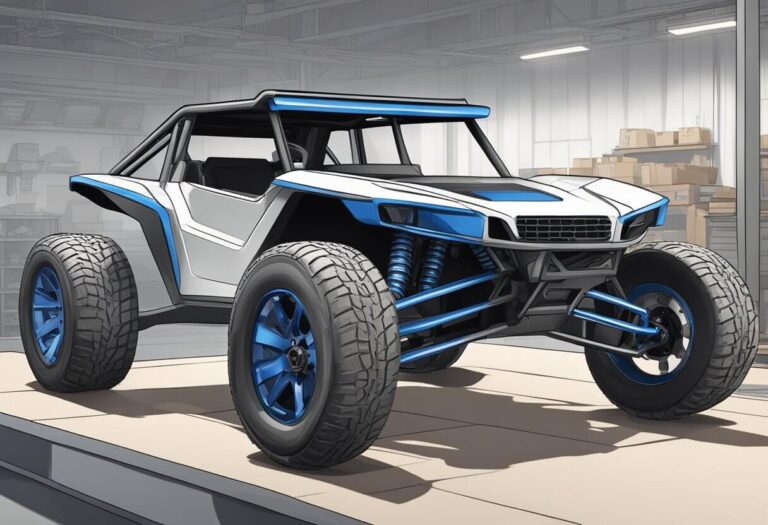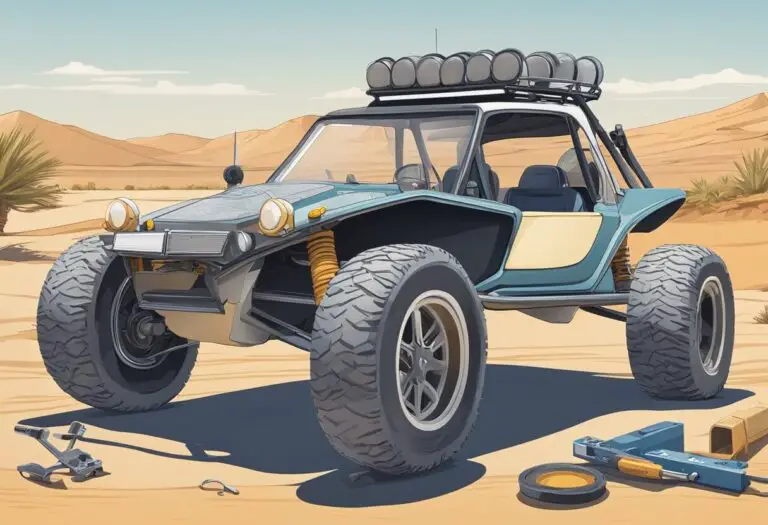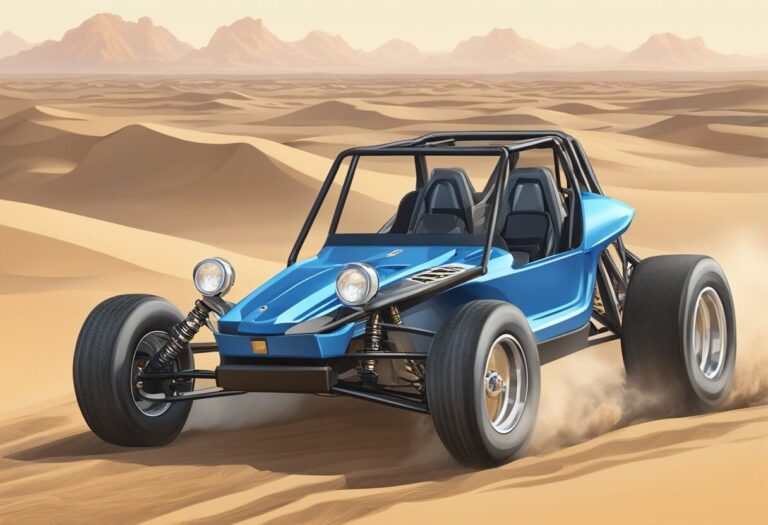Street Legal Dune Buggy Kits: How to Build Your Own Off-Road Vehicle
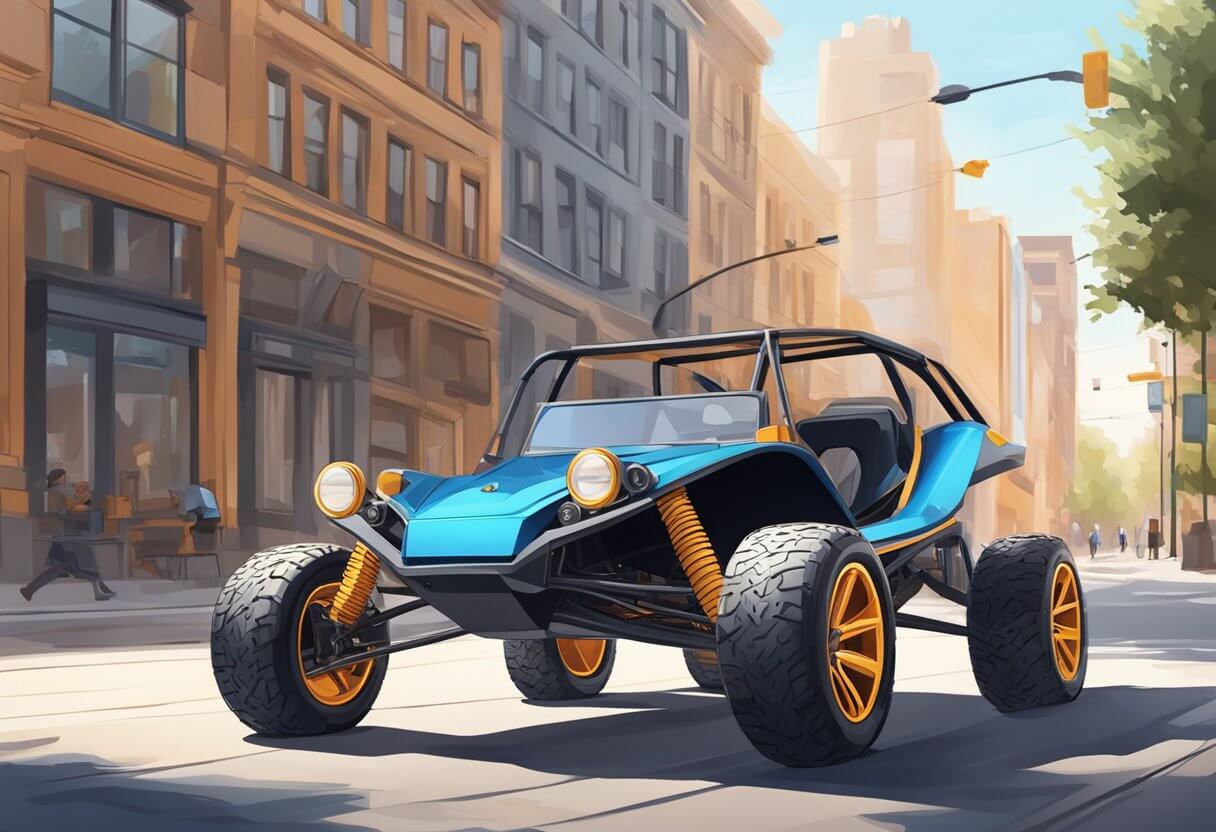
Dune buggies are off-road vehicles that are designed for use on sand dunes, beaches, and other rough terrain. However, some dune buggy enthusiasts want to take their vehicles on public roads as well. To do this, they need to make sure their dune buggy is street legal. This involves meeting certain requirements, such as having proper lighting, brakes, and other safety features.
Street legal dune buggy kits are available for those who want to build their own dune buggy that can be driven on public roads. These kits typically include all the necessary parts and instructions for assembling a dune buggy that meets street legal requirements. They may also include options for customization, such as different body styles, colors, and accessories.
Before purchasing a street legal dune buggy kit, it’s important to understand the requirements for street legal operation in your area. This may involve researching local laws and regulations, as well as consulting with experts in the field. Additionally, it’s important to consider factors such as cost, maintenance, and safety when deciding whether to build a street legal dune buggy.
Key Takeaways
- Building a street legal dune buggy requires meeting certain requirements, such as proper lighting and safety features.
- Street legal dune buggy kits are available for those who want to build their own vehicle.
- Before building a street legal dune buggy, it’s important to research local laws and regulations, and consider factors such as cost, maintenance, and safety.
Understanding Dune Buggy Kits

Dune buggy kits are a popular option for off-road enthusiasts who want to build their own vehicle. These kits come with all the necessary parts and instructions to build a dune buggy from scratch. In this section, we will discuss the components of a kit and the different types of dune buggies available.
Components of a Kit
A typical dune buggy kit includes a frame, suspension, wheels, tires, brakes, steering, and a body. Some kits may also include an engine and transmission, while others may require you to purchase these separately. It is important to carefully read the instructions and components list before purchasing a kit to ensure that you have everything you need.
Types of Dune Buggies
There are several types of dune buggies available, each with its own unique features and capabilities. Some of the most popular types include:
- Sand Rail: A sand rail is designed specifically for use on sand dunes and beaches. It is typically lightweight with a long wheelbase and high ground clearance.
- Beach Buggy: A beach buggy is similar to a sand rail but can also be used on other terrains. It is typically larger and heavier than a sand rail and has a shorter wheelbase.
- Street Legal: A street legal dune buggy is designed to meet the legal requirements for driving on public roads. It typically includes features such as turn signals, headlights, and a windshield.
Overall, dune buggy kits are a great option for those who want to build their own off-road vehicle. It is important to choose the right kit for your needs and carefully follow the instructions to ensure a safe and successful build.
Street Legal Requirements

When it comes to making a dune buggy street legal, there are several requirements that must be met to ensure the safety of the driver and other road users. These requirements may vary depending on the state or country in which the vehicle will be registered.
Safety Standards
One of the most important requirements for a street legal dune buggy is meeting safety standards. This includes having a working engine, brakes, seats, frame, and other essential components. In addition, the vehicle must also have seat belts, roll bars, and other safety features that meet the standards set by the Department of Transportation.
Emission Regulations
Another important factor to consider when making a dune buggy street legal is meeting emission regulations. The vehicle must have an exhaust system that meets the standards set by the Environmental Protection Agency (EPA). This includes having a catalytic converter and other components that reduce emissions and pollutants.
Lighting and Signaling
The lighting and signaling requirements for a street legal dune buggy include having headlights, taillights, brake lights, turn signals, and reflectors. These lights must be visible from a certain distance and meet the standards set by the Department of Transportation. In addition, the vehicle must also have a horn, mirrors, and other signaling devices that meet the requirements.
So, meeting these requirements is essential for making a dune buggy street legal. It is important to research the specific requirements for the state or country in which the vehicle will be registered to ensure compliance with all regulations.
Assembly and Customization
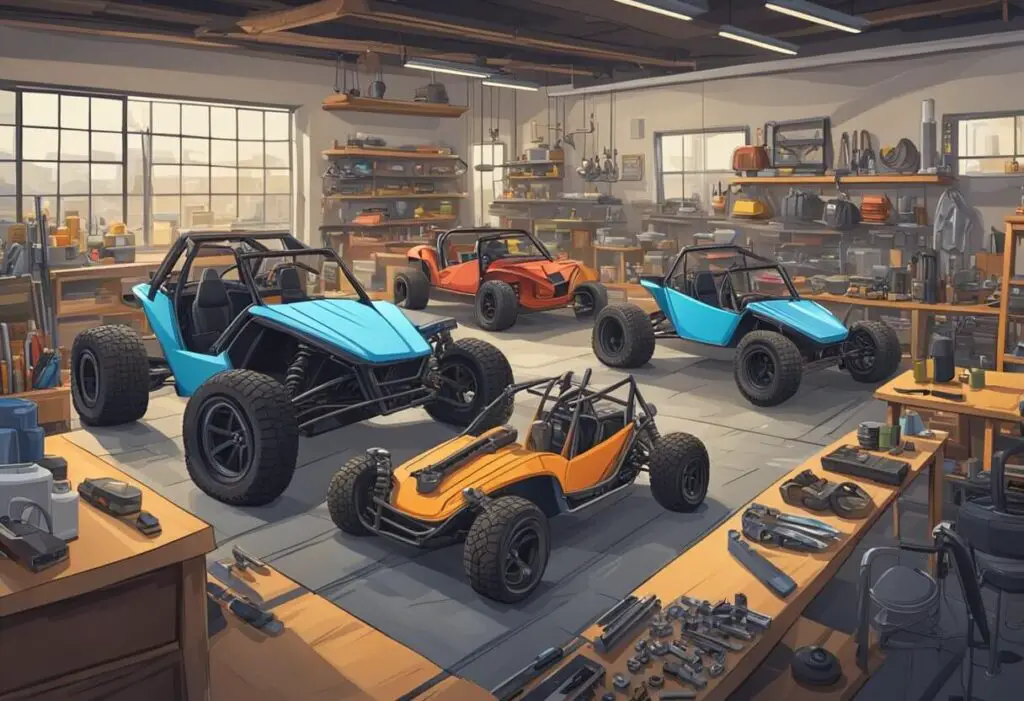
Building Your Dune Buggy
When it comes to building a street legal dune buggy, there are many options available. One popular choice is to purchase a kit, which typically includes all the necessary components to build a complete buggy. These kits can range from basic setups to more advanced options with additional features.
The assembly process can be challenging for those without experience, but can also be a rewarding experience. It is important to follow the instructions provided with the kit carefully and ensure that all components are installed correctly. This will ensure that the dune buggy is safe and reliable for street use.
Customization Options
One of the benefits of building a dune buggy from a kit is the ability to customize it to fit individual preferences and needs. There are many options available for customization, including:
- Paint and graphics: A custom paint job and graphics can give a dune buggy a unique look and make it stand out on the road.
- Suspension upgrades: Upgrading the suspension can improve the ride quality and handling of the dune buggy.
- Lighting and electrical upgrades: Adding additional lighting and electrical components can improve visibility and safety on the road.
- Engine upgrades: Upgrading the engine can increase power and performance, but it is important to ensure that the dune buggy remains street legal.
Building and customizing a street legal dune buggy can be fun and rewarding. Follow instructions carefully, install components correctly for a safe, reliable vehicle. Customization options make the dune buggy unique, fitting individual preferences and needs.
Registration and Inspection
DMV Registration Process
To make a dune buggy street legal, one of the most important steps is to register it with the DMV. The registration process can vary depending on the state in which the vehicle is being registered. However, in general, the following steps are required:
- Obtain a title for the dune buggy.
- Have the vehicle inspected to ensure it meets all safety and emissions requirements.
- Obtain insurance for the dune buggy.
- Fill out the necessary paperwork and pay the registration fees.
It is important to note that the DMV is very strict on seat belt laws, and failing to wear a seat belt could result in a hefty fine or even the loss of a life. Therefore, it is crucial to ensure that the dune buggy has proper seat belts installed.
State-Specific Laws
Each state has its own laws regarding street legal dune buggies. Some states require additional safety features, such as turn signals, brake lights, and mirrors. It is important to research the laws in the state where the vehicle will be registered to ensure that it meets all requirements.
In some cases, it may be necessary to modify the dune buggy to comply with state laws. This can include adding additional safety features or making other modifications to the vehicle. It is important to consult with a professional mechanic or other expert to ensure that any modifications are done safely and properly.
The registration and inspection process for a street legal dune buggy can be complex and time-consuming. Following necessary steps and complying with state laws makes it possible to make a dune buggy street legal, allowing enjoyment on public roads.
Maintenance and Upkeep
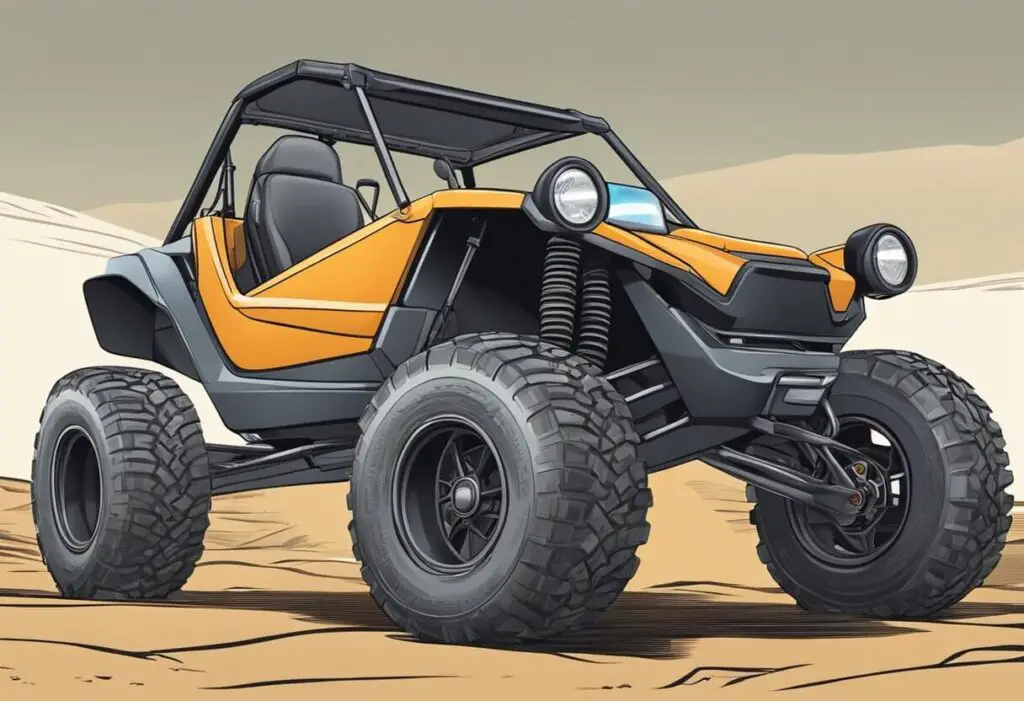
Routine Maintenance
Keeping up with routine maintenance is crucial to ensure the longevity and safety of your street legal dune buggy. Here are some basic maintenance tasks that should be performed regularly:
- Check the oil level and change it as needed.
- Inspect the tires for wear and proper inflation.
- Check the brakes and brake fluid level.
- Inspect the suspension and steering components for damage or wear.
- Clean the air filter and replace it if necessary.
- Check all lights and signals to ensure they are working properly.
- Lubricate all moving parts as needed.
Performing these tasks regularly can help prevent major issues and keep your dune buggy running smoothly.
Long-Term Care
In addition to routine maintenance, there are some long-term care tasks that should be performed to ensure the longevity of your street legal dune buggy:
- Store your dune buggy in a dry, covered area to prevent rust and other damage.
- Keep the battery charged and disconnected when not in use for extended periods of time.
- Check and replace the spark plugs as needed.
- Inspect the fuel system for leaks or damage.
- Replace the timing belt or chain as recommended by the manufacturer.
- Check the transmission and differential fluid levels and change them as needed.
By following these long-term care tasks, you can help ensure your street legal dune buggy stays in top condition for years to come.
Cost and Budgeting
Kit Pricing
When it comes to buying a street legal dune buggy kit, the cost can vary greatly depending on the type of kit and the level of customization desired. Basic kits can start at around $2,000 and go up to $10,000 or more for more advanced kits. It is important to research and compare different kits to find one that fits within your budget and meets your needs.
One example of a dune buggy kit is the Meyers Manx Remastered Kit, which is priced at $8,495. This kit includes a fiberglass body, windshield, hood, and other necessary components for building a street legal dune buggy. It is important to note that this kit does not include a chassis or engine, which will need to be purchased separately.
Additional Expenses
In addition to the cost of the kit itself, there are several other expenses to consider when building a street legal dune buggy. These expenses can include:
- Chassis: Depending on the type of dune buggy kit, a chassis may need to be purchased separately. The cost of a chassis can range from a few hundred dollars to several thousand dollars.
- Engine: An engine will need to be purchased separately for most dune buggy kits. The cost of an engine can vary greatly depending on the type and size of the engine.
- Transmission: A transmission will also need to be purchased separately for most dune buggy kits. The cost of a transmission can vary depending on the type and quality.
- Tires and Wheels: Tires and wheels will need to be purchased separately for most dune buggy kits. The cost of tires and wheels can vary depending on the size and quality.
- Lights and Accessories: To make a dune buggy street legal, it will need to be equipped with lights and other accessories. The cost of these items can vary depending on the type and quality.
Budget for additional expenses when planning to build a street legal dune buggy. Ensure enough funds to complete the project without unexpected financial setbacks.
Safety and Driving Tips
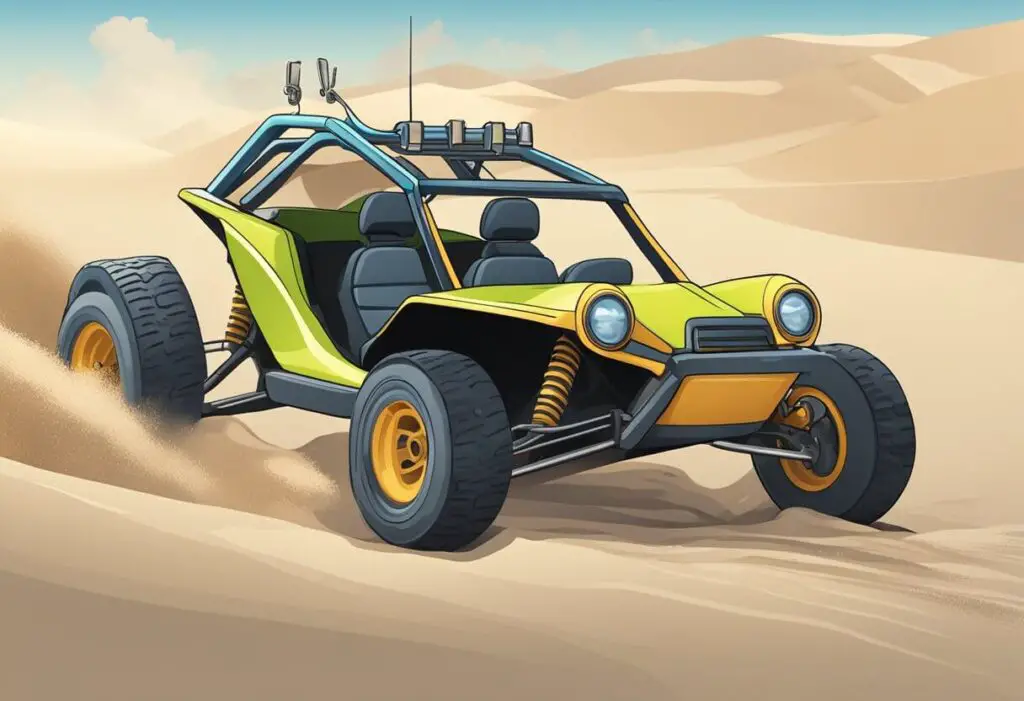
Driving Safety
When it comes to driving a street legal dune buggy, safety should be the top priority. Here are some important driving safety tips to keep in mind:
- Always wear a helmet and other protective gear such as goggles, gloves, and sturdy shoes.
- Make sure that the dune buggy is equipped with safety features such as seat belts, roll cages, and bumpers.
- Check the brakes, tires, and steering before each ride to ensure that they are in good working condition.
- Follow all traffic laws and regulations, including speed limits and right-of-way rules.
- Stay alert and aware of your surroundings at all times, especially when driving on public roads.
Off-Road Etiquette
When driving a street legal dune buggy off-road, it is important to follow proper off-road etiquette to ensure that you are respectful of other drivers and the environment. Here are some tips to keep in mind:
- Stay on designated off-road trails and avoid damaging vegetation or wildlife habitats.
- Yield to other drivers and hikers on the trail and slow down when passing.
- Avoid excessive speed and reckless driving, especially when driving in a group.
- Pack out all trash and leave the area cleaner than you found it.
- Be respectful of private property and obtain permission before driving on private land.
By following these driving safety and off-road etiquette tips, you can enjoy the thrill of driving a street legal dune buggy while also staying safe and being respectful of others and the environment.

